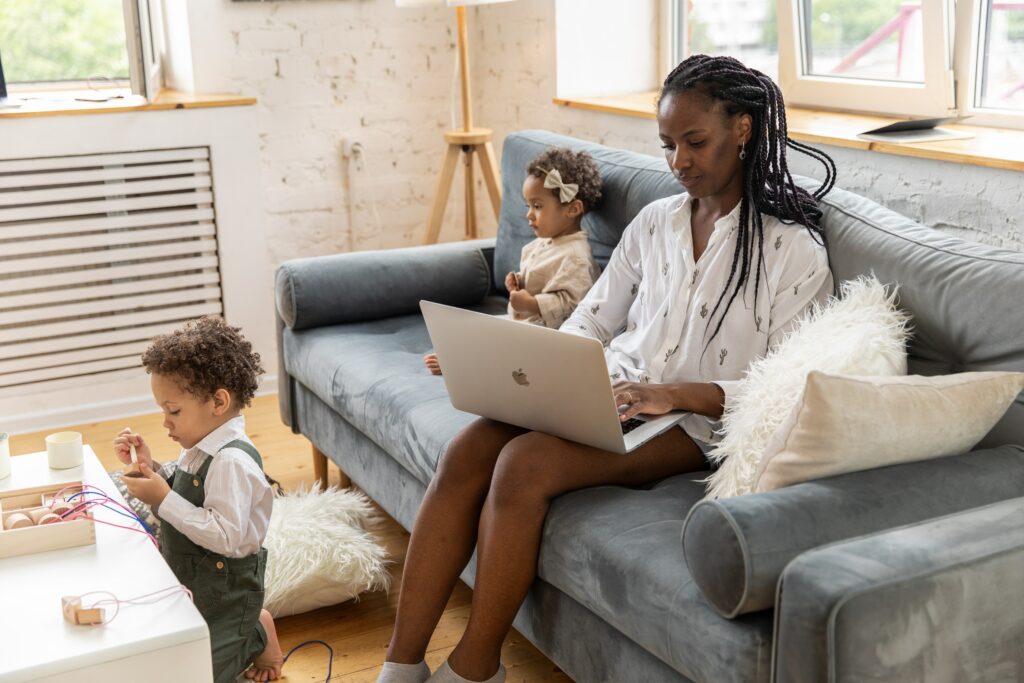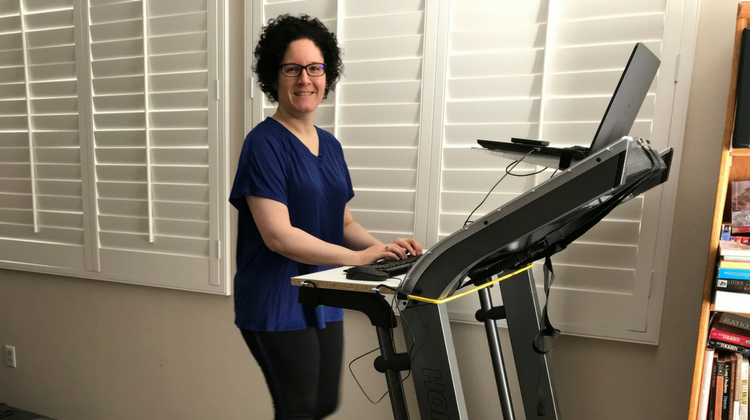The 150-Year History of Work from Home (and Why it Should Always Be a Choice)
First, a history lesson.
Yet again, black women don’t get the credit they deserve. This time, its in the realm of working from home. Many laundresses, even before the genius of Clara Brown and all the way through WWII, saw an opportunity to make money AND stay at home. Starting in the late 1800s, many freed slaves and indentured servants who had their own living quarters – on the back of the land of former owners or in black-only parts of town – would pick up or have laundry dropped off where they lived from white families who just couldn’t be seen doing themselves.
Many white women had never done laundry during the slave-owning periods and would rather PAY for the service than learn to do it on their own. If you were middle or upper class but had clotheslines visible on your property, you were looked down upon by your peers. “Getting up the laundry” was so much work, and a chore so hated, that laundry was sent out by all who could afford it.
During both World Wars, many homemakers had to hit the assembly lines and laundry services were needed again. All of these happenings allowed the black women entrepreneurs to offer said services out of their own homes, which allowed them to care for their children and tend to household needs at the same time.
It wasn’t til the 1980s that the idea of remote jobs really picked up steam, yet it took a pandemic to jut this movement into the limelight. Countless studies, surveys, and real-time research has been done around the subject showing that:
- More than half of employees (54 percent) would readily quit their current job for another job that allows them to work from home
- A remote work research initiative in 2020 also revealed that more than 40 percent of employees now prefer to work from home permanently
- 80 percent of employees say that they would turn down a job offer if it didn’t allow them to work remotely
- 64% of Millennials would like to occasionally work from home, and 66% would like to shift their work hours
- Over 78 percent of HR professionals state that remote working is one of the most effective non-monetary ways of retaining employees
Local Journalism for Working stiffs
We write for the poets, busboys, and bartenders. We cover workers, not ‘tech’, not the shiny ‘forbes 100 bullshit’. We write about the business on your corner and the beer in your hand. Join the Bay's best newsletter.
Now, let’s peep the astounding facts that would have most employers and employees considering remote work possibilities for the near 40% of positions that could be done from home:
- Remote workers have an improved work-life balance. 75% of new remote employees say work-life balance has improved and studies have found that remote employees have twice as much work-life balance as full-time office workers
- After the onset of the pandemic, where 80% of us went remote, the number of sexual harassment charges filed with the EEOC decreased to 6,587. In 2021, they decreased further to 5,581, dropping approximately 26 percent from the 2018 and 2019 numbers
- It saves the company AND employees money – The average person can save up to $6,000 working at home half the time in a hybrid role and up to $12,000 per year by working remotely …companies can save up to $11,000 for every employee working two or three days remotely per week
- IBM has saved about $100 million annually since beginning its remote work program
- People who primarily work remotely outearn the average in-office worker – not by a few hundred bucks a year, either, but by a solid 28%
- Analysis showed that the people who switched to remote work had reduced psychological and physical stress responses – prioritizing mental health can actually happen as remote workers experience less stress with 29% of remote workers saying they were moderately stressed at work, down from 33% in 2019 when office work was the norm
- Invertly, employees who feel “extremely” stressed while working has declined from 17% in 2019 to 15% in 2020 as work shifted from in-person to at home (these percentages might seem small but they account for MILLIONS of workers)
- WFH shrinks carbon footprint immensely; If 3.9 million people didn’t have to drive to work, it would be like removing 600,000 cars from the roads. Greenhouse gas emissions from energy and industry dropped more than 10 percent in 2020
- Less risk for workers; auto accidents, weather-related injuries, workplace violence/shootings, the aforementioned SH/SA
- The average American worker spends in transit UNPAID to and from the workplace – the answer, from a few 2023 studies, is just under an hour a day. 51 min X 5 days X 50 wks 🙀 Wage theft by employers already racks up $8 billion every year in only 10 states due to UNPAID time
- Research shows that employees working remotely can save $4,500 on commuting costs annually
- 58% of WFH employees admit to staying in bed a little longer in the morning or having an afternoon delight during lunch. More sex = less distracted and happier humans who live longer (since we’re supposed to work until we’re AT LEAST 66, might as well consensually get laid while doing it)
- Remote work provides wider opportunities for diversity and inclusion – hiring remotely means you can hire anyone from anywhere ensnaring you a much better workforce – over 78 percent of companies believe that offering flexible and remote working perks enables them to expand their talent pool
- More than 77 percent of employees working from home report higher productivity and they are also 52 percent less likely to take time off from work
- 85 percent of organizations have already confirmed that they have noticed an increase in productivity after offering greater flexibility to their employees in terms of choosing their work environment
- Healthier employees take less sick days – being able to eat more healthfully, fit in routine exercise, and less exposure to germs is a big proponent to not getting sick
- It gives so many more employees the time and opportunity to VOTE – aight, this might be scary for many employers who are all about control but get out there and VOTE (this author legit took a client call after 5 pm in 2020 because the line at the polls were loooooong, and yes, very fortunate that polls stay open in the evenings)
- Enabling cognitive improvements by allowing workers to listen to THEIR music, podcasts, meta tones, silence, etc.
- Subsequently allowing them to learn more – more time to learn about their industry, take classes, improve as a person and employee
When it comes down to it, if a job can be done remotely (on-site work settings are for jobs that require you to be the face or hands of a company; cashier, server, assembly line, landscaping – most service and manufacturing industries) then give that option. The more freedom and trust you give employees the more likely they are to stick around – turnover is much more expensive than a home-office stipend.
Per usual, if you’d like to see more content like this you can join the BAS Patreon, tip your favorite WFH writer, and donate to a workers’ rights organization.
GRAB THE LIMITED EDITION BAS X AMOS GOLDBAUM SHIRT!

Howdy! My name is Katy Atchison and I'm an Associate Editor for Broke-Ass Stuart.
I want to take the time to say thank you for supporting independent news media by reading BrokeAssstuart.com. Supporting independent news sources like Broke-Ass Stuart is vital to supporting our community because it amplifies the voices of a wide variety of diverse opinions. You also help support small businesses and local artists by sharing stories from Broke-Ass Stuart.
Because you're one of our supporters, I wanted to send over a pro-tip.
Our bi-weekly newsletter is a great way to get round ups of Broke-Ass Stuart stories, learn about new businesses in The Bay Area, find out about fun local events and be first in line for giveaways.
If you’d like to get our newsletter, signup right here, it takes 5 seconds.















